The Top 10 Must-Have Tools for Designers
Designers today have access to an incredible array of software and hardware tools that can help them create stunning visuals, engaging experiences, and innovative products. But with new apps and gadgets coming out all the time, it can be overwhelming to figure out which ones are worth the investment.
That's why I've compiled this list of the ten must-have tools for designers that they should have in their toolkit for 2024. These apps, plugins, devices, and services will make you more productive, creative, and collaborative. They range from industry-standard platforms to cutting-edge newcomers – but they all deliver immense value.
Read on to explore the top 10 tools that no designer should be without!
Table of Contents
1 – Adobe Creative Cloud
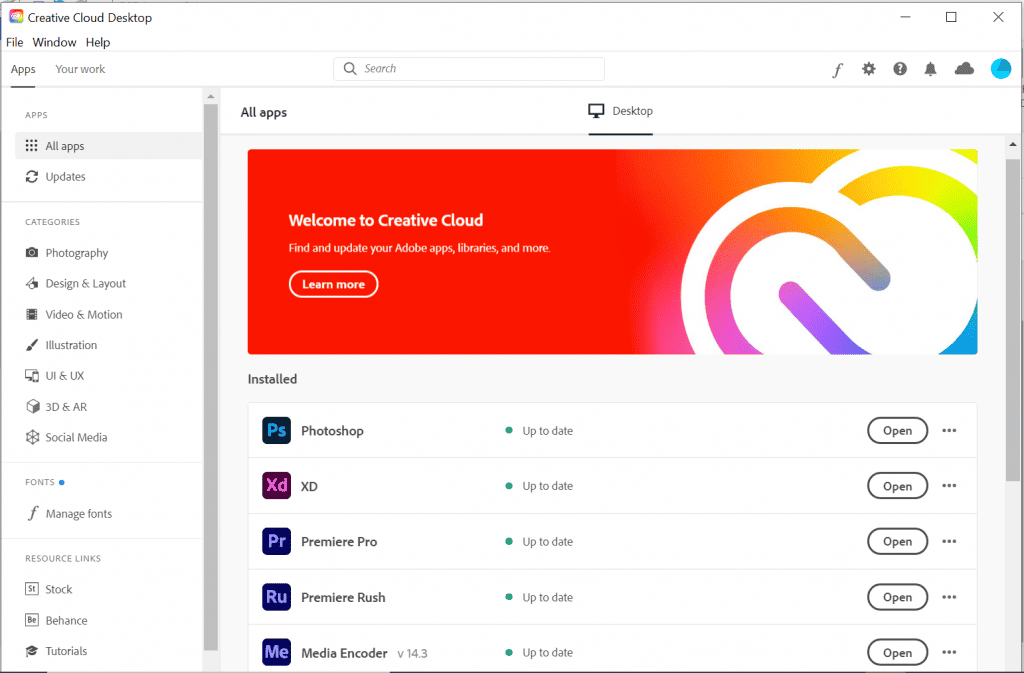
The Adobe Creative Cloud is the undisputed industry leader in design software. It's an indispensable collection of apps that cover everything from photo and video editing to digital illustration, web design, UX, and print layout.
For designers, the core apps include:
- Photoshop: The premier image editing and compositing app, perfect for photographers, digital artists, and graphic designers.
- Illustrator: The go-to vector graphics editor for illustrations, logos, icons, and anything that requires precision.
- InDesign: The professional tool for page layout and print projects like brochures, books, and magazines.
- XD: Adobe's UI/UX design platform for designing and prototyping websites, mobile apps, and more.
While the entire Creative Cloud subscription provides access to over 20 apps, just those core four make the subscription worthwhile. Adobe rounds out the toolkit with deep integration between apps, built-in templates and asset libraries, and seamless cloud collaboration. For professional designers, the Creative Cloud is non-negotiable.
2 – Sketch
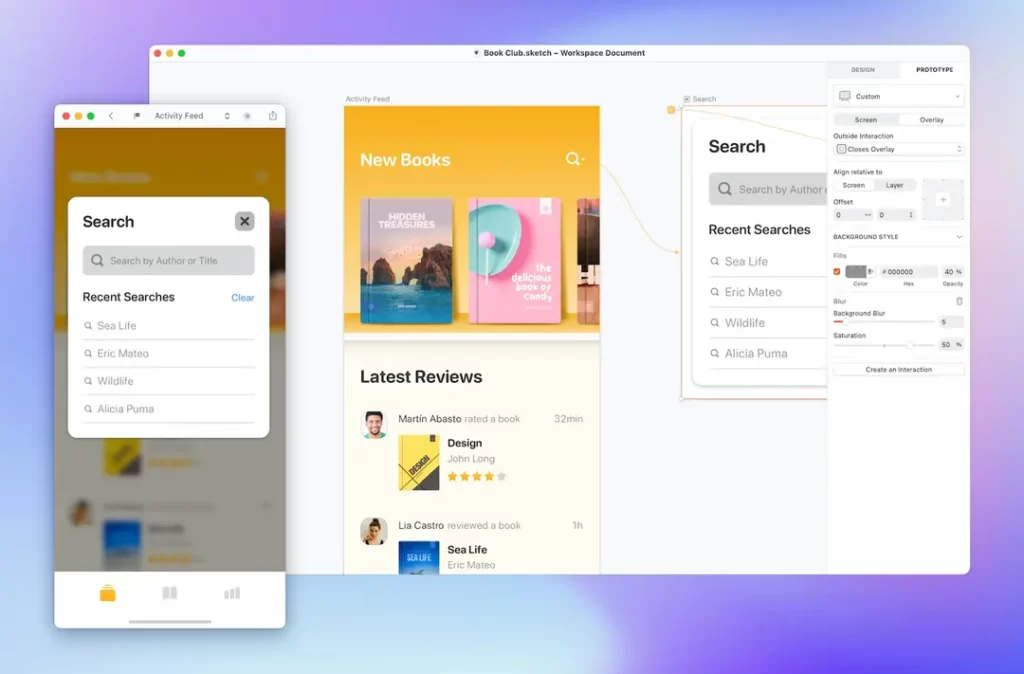
Sketch has emerged as an incredibly powerful design platform for UX and UI designers. The vector graphics editor is tailored for interface, website, and app design with a workflow that facilitates rapid prototyping.
Key features include:
- Fast, flexible tools for creating wireframes, mockups, and high-fidelity visuals.
- Smart layers, symbols, and reusable components that accelerate the process.
- Powerful prototyping capabilities to preview interactions.
- A vast library of UI kits, wireframing templates, icons, and design assets.
- Syncing and collaboration features for cross-functional teamwork.
With an intuitive, uncluttered interface and focused toolset for UI design, Sketch allows designers to work smarter and faster. It's become the tool of choice for many digital product designers.
3 – Figma
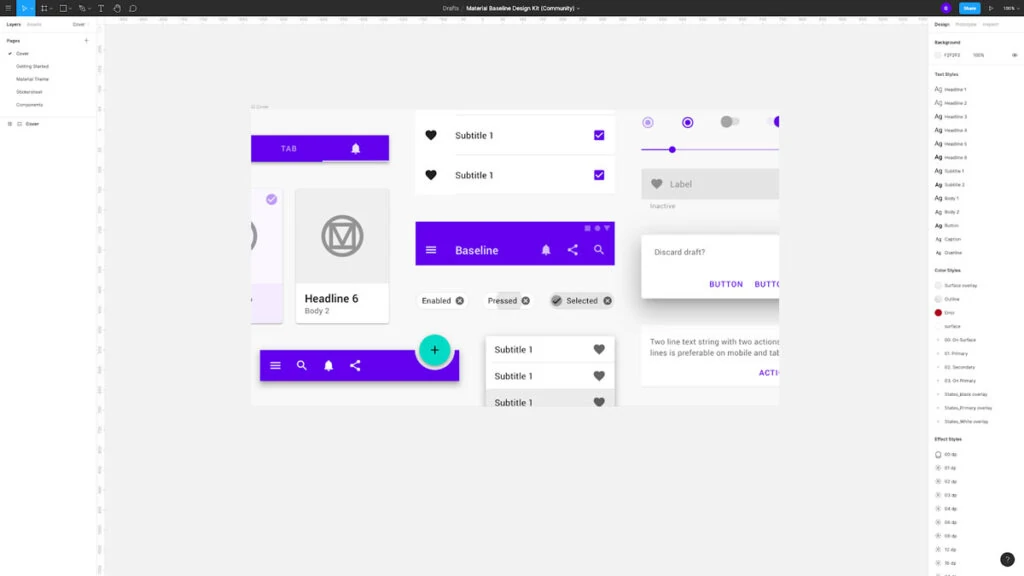
Whereas Sketch is designed for the individual designer, Figma facilitates real-time team collaboration in the browser. Designers can work together on the duplicate files, allowing for rapid ideation, feedback, and iteration.
Figma provides:
- Multiplayer editing so multiple people can work in a file at once.
- Built-in commenting and version history features for team feedback.
- Prototyping and linking tools to design interactive flows.
- Libraries of components and styles for consistent designs.
- Plugin ecosystem for added functionality.
- Platform-agnostic with Mac, Windows, and Linux support.
For teams of designers, product managers, and engineers who need to collaborate closely throughout a project, Figma is a game-changer. The seamless team design capabilities allow creativity and ideas to flourish.
4 – Affinity Designer

For designers who want fast, powerful vector graphics and a raster image editor at an affordable price, Affinity Designer is a compelling alternative to Adobe Illustrator. The one-time purchase delivers professional design tools without a subscription.
Key advantages include:
- Smooth, precise vector tools for illustrations, branding, icons, and more.
- Pixel-level editing for photographic retouching and composition.
- Adjustment layers for non-destructive effects and edits.
- Perspective, blend, and warp tools for 3D effects.
- Export for web, print, and video.
- Compatible with other Affinity apps like Photo and Publisher.
For all vector projects, from logos to book covers, Affinity Designer provides an agile, intuitive design workflow. The minimal interface allows users to focus on the design rather than hunting for tools. At a fraction of the cost of Adobe's offerings, it makes an excellent addition to any designer's toolkit.
5 – Procreate
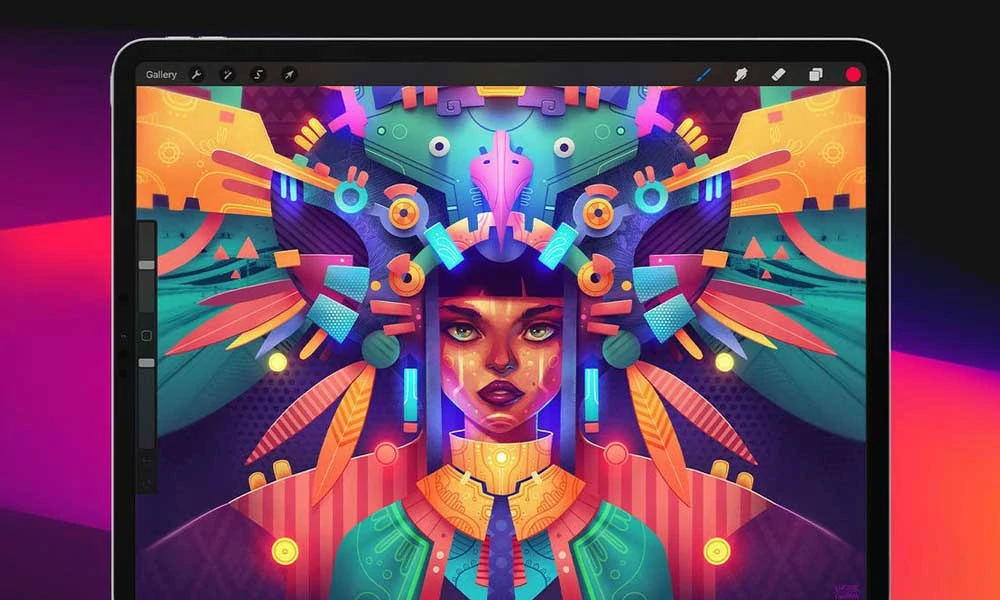
For digital artists and illustrators, Procreate offers one of the best creative painting experiences on the iPad and iPhone. The easy-to-use digital canvas delivers beautifully realistic tools, unmatched performance, and intuitive gestures, allowing artists to focus on the art.
Standout features include:
- Over 190 handmade brushes with rich textures and fluid flexibility.
- Super-fast 64-bit drawing engine even on large canvas sizes.
- Multi-touch gestures for natural painting, sketching, and blending.
- Complex layer compositing with glows, blurs, masking, and more.
- Perspective and reference tools for accurate illustrations.
- Record timelapse videos of the creation process.
Made exclusively for iOS, Procreate taps into the touch capabilities like no other app. For digital painting, sketching, and concept art, it provides an unrivalled tactile experience.
6 – Capture One
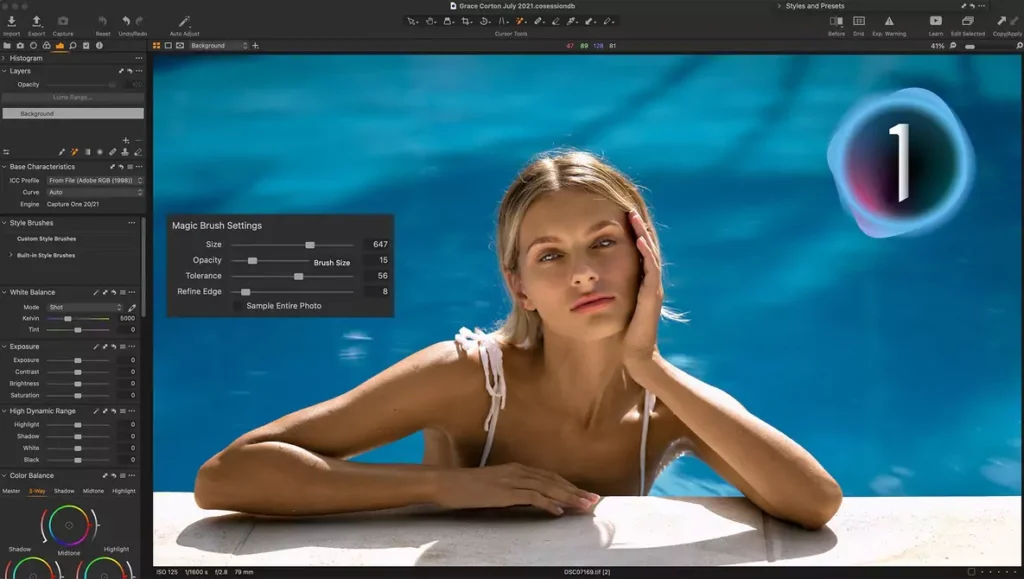
Capture One aims to be the ultimate RAW photo editing software for professional photographers and retouchers. Unlike Adobe Lightroom, it's dedicated solely to processing RAW files with precision colour, detail, and control.
Key features include:
- Customisable workflows for organising and editing photos.
- Powerful colour editing tools with unique colour profiles.
- Advanced layer editing for non-destructive retouching.
- Top-tier noise reduction and sharpening.
- Lens/camera profiling for optical corrections.
- Seamless studio tethering capabilities.
The extensive RAW processing toolkit combined with speed, organisation, and customizability has made Capture One the preferred choice for high-end studios and photographers. It provides unparalleled control over the RAW development workflow.
7 – Adobe Portfolio
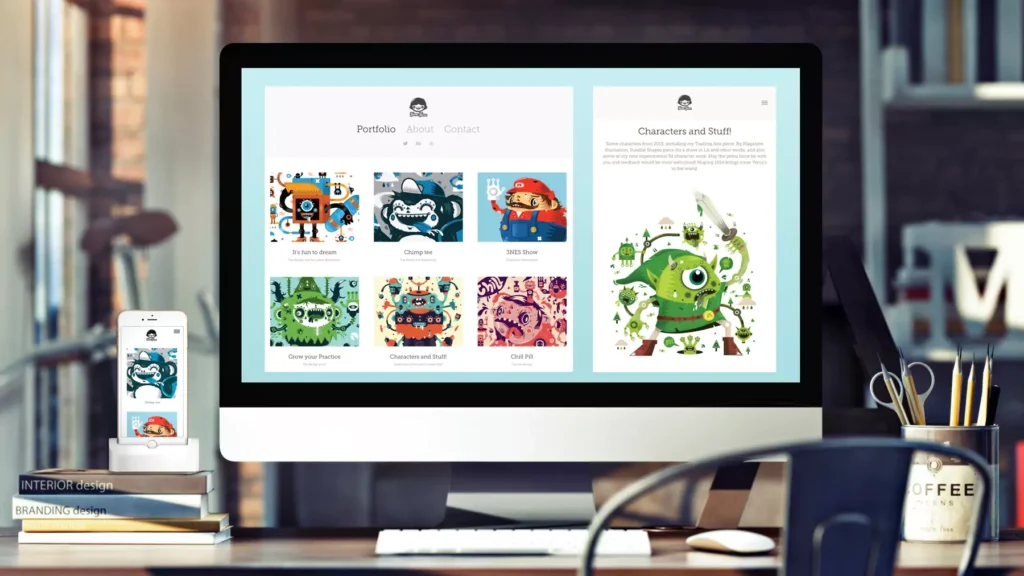
Adobe Portfolio plugs into the Creative Cloud for designers who must showcase their work online in a polished, customisable portfolio. It allows users to quickly create a portfolio website seamlessly integrating with Behance and Adobe apps.
It provides:
- Beautiful, responsive portfolio templates.
- Easy customisation with colours, fonts, and layouts.
- Integration with Behance projects and analytics.
- Ability to manage and showcase project work.
- Customisable domain name.
- Built-in image galleries.
Whether you use it as your leading portfolio site or for specific projects, Adobe Portfolio allows designers to put their best work online with minimal hassle. And with the Creative Cloud synergy, it's easy to manage and update frequently.
8 – Dribbble
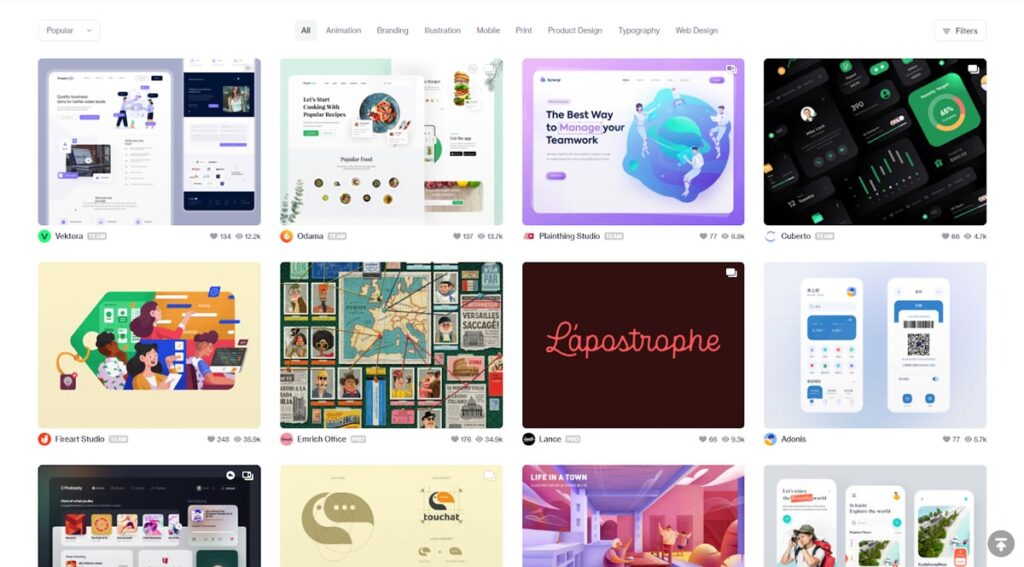
Dribbble is the premier online community for inspiration and self-promotion for designers to share work, connect with clients, and get noticed. The skilled artistic community provides a constant source of outstanding designs across various disciplines.
Designers can:
- Upload shots of designs, illustrations, user interfaces, and more.
- Follow other top designers in their field.
- Like and provide feedback on other's work.
- Build their reputation through likes and followers.
- Get hired for freelance projects.
Dribbble provides a platform to gain global exposure as a designer, get immediate feedback, and form meaningful connections. Those just starting can draw inspiration from top creatives, while established designers have an outlet to solidify their brand.
9 – Marvel

To bring digital product designs to life, Marvel allows designers to prototype interactive interfaces and user flows. By connecting images or design files, designers can simulate the user experience before coding happens.
Marvel delivers:
- Simple linking tools to create clickable prototypes.
- Ability to test prototypes on actual devices via the Marvel App.
- Options for basic animations and transitions.
- Commenting tools to gather feedback.
- Link sharing and analytics.
- Developer handoff capabilities.
This form of prototyping allows designers, clients, and team members to experience and interact with the end product early in the process. Marvel brings user flows and experiences to reality quickly.
10 – Webflow
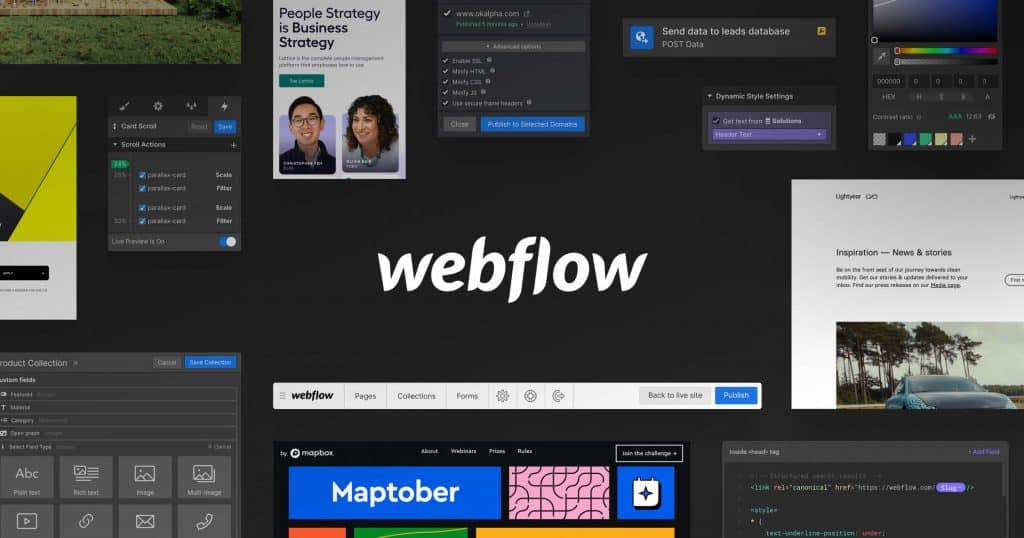
For designers who want to prototype and build production-ready websites without coding, Webflow provides the ideal design workflow. Designers can design, build, and launch responsive websites through intuitive visual tools and menus versus writing lines of code.
Webflow empowers designers to:
- Create responsive, interactive website and landing page designs.
- Animate elements and interactions with ease.
- Build web forms, shopping carts, popups, and other dynamic features.
- Host and publish sites or export clean code.
- Design and prototype CMS templates.
The drag-and-drop editor mimics the design tools designers are familiar with but generates clean front-end code. This allows designers to bring their visual concepts directly into a web environment that is ready to deploy. Webflow bridges the gap between design and development.
Power Up Your Design Workflows
This collection of 10 tools covers everything from industry-standard design apps to team collaboration, inspiration, prototyping, and publishing tools. By adopting some of these solutions, designers can boost their productivity, streamline workflows, access design inspiration, and bring their ideas to life visually, interactively, and publicly.
The design world constantly evolves, but these tools provide a strong foundation for delivering standout work. Each one solves challenges that designers face regularly. Investing time to learn and integrate these ten tools will pay dividends through quicker ideation, improved teamwork, simplified execution, and elevated skill development.
In 2024, step up your design game by tapping into the capabilities of these must-have designer tools! Leverage them to maximise creativity, problem-solve effectively, and streamline workflows from concept to finished product. Any designer who uses these tools will be empowered to work smarter, faster, and better.
FAQs About Essential Tools for Designers
What are the three most essential tools every designer should have?
Adobe Creative Cloud: This gives access to industry-leading apps like Photoshop, Illustrator, and XD for design and prototyping.
Sketch or Figma: Provides intuitive UI/UX design options for websites, apps, and products.
Procreate or Affinity Designer: Allows professional digital illustration, graphic design, and photo editing.
What tools do professional graphic designers use?
Professional graphic designers use vector graphics tools like Adobe Illustrator or Affinity Designer for logo design, branding, editorial design, and illustration. For layout and production, they use Adobe InDesign. Adobe Photoshop is the standard for photo editing, manipulation, and composition.
What apps are best for digital artists?
The best digital art and illustration apps provide realistic brushes, advanced layering, lighting and blending options. My top choices are Procreate, Adobe Fresco, and Clip Studio Paint. For painting and drawing with a tablet, Procreate offers the most lifelike experience.
What is the most straightforward design program for beginners?
Some of the most accessible design programs for beginners are Canva, Adobe Express, and Adobe Spark. These apps provide professionally designed templates, drag-and-drop functions, and intuitive tools to create graphics, photos, and videos with minimal learning needed.
What is the best free design software?
Canva for graphic design and simple image editing.
GIMP is a free, open-source alternative to Photoshop.
Gravit Designer for vector illustrations as an alternative to Illustrator.
Figma for UI/UX design with team collaboration capabilities.
What online tools do designers use?
Design inspiration platforms like Dribbble and Behance
Colour scheme tools like Adobe Color and Coolors
Photo editing and compositing tools like Pixlr and Photopea
Prototyping apps like Marvel and InVision
Website builders like Webflow for interactive design
Should all designers know how to code?
Designers don't have to know coding, but having basic HTML and CSS skills can make designers more well-rounded and collaborative with developers. Many also choose to learn JavaScript for front-end design and prototyping. Designers who code can create interactive prototypes faster.
What graphic design skills are most in demand?
Expertise in tools like the Adobe Creative Cloud
UI/UX design experience
Mobile design and responsive design capabilities
Motion graphics and animation knowledge
Video production and editing abilities
Branding and marketing design skills
What upcoming design trends should creatives focus on learning?
Three-dimensional and isometric design
Semi-flat and neumorphic styles
Variable fonts and typographic illustrations
Minimalism and negative space
Bold, vivid colour schemes
Animated interactions and gestures
Asymmetrical and broken grid layouts
What new design tools and apps show the most promise and potential?
New design tools like Figma, Procreate, and Webflow show great promise. Adobe Fresco brings realistic painting to tablets. Social design tools like Maze and Concepts allow easy remote collaboration. And apps like Shapr3D, Gravity Sketch, and Nomad Sculpt are unlocking new 3D design capabilities.

Great curation Stuart. Thanks for the share.
Also, this link (https://intools.co/design) provides many more amazing tools for designers.